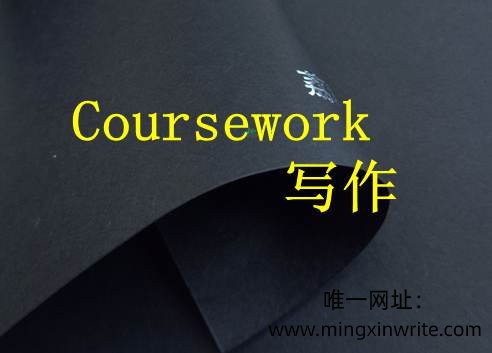发布时间:2020-10-20 热度:
专业经济学essay高分论文
下面为大家整理一篇优秀的essay代写范文 -- The Black Death and commercial economics,文章讲述与农业一样,评估黑死病对经济商业部门的影响也是一个复杂的问题。人们普遍承认中世纪高经济的活力。在第一个千年进入第二个世纪之前,城市生活得到复兴,贸易和制造业蓬勃发展,商人和手工艺人兴起,商业和金融创新激增(例如,合伙企业,海事保险,两次入境记账,公函,信用证,汇票,贷款合同,商户银行业务等)。中世纪高级经济的融合达到顶峰c。
The Black Death and commercial economics
As with agriculture, assessment of the Black Death’s impact on the economy’s commercial sector is a complex problem. The vibrancy of the high medieval economy is generally conceded. As the first millennium gave way to the second, urban life revived, trade and manufacturing flourished, merchant and craft gilds emerged, commercial and financial innovations proliferated (e.g., partnerships, maritime insurance, double—entry bookkeeping, fair letters, letters of credit, bills of exchange, loan contracts, merchant banking, etc.). The integration of the high medieval economy reached its zenith c. 1250 to c. 1325 with the rise of large companies with international interests, such as the Bonsignori of Siena and the Buonaccorsi of Florence and the emergence of so—called “super companies” such as the Florentine Bardi, Peruzzi, and Acciaiuoli (Hunt and Murray, 1999).

How to characterize the late medieval economy has been more fraught with controversy, however. Historians a century past, uncomprehending of how their modern world could be rooted in a retrograde economy, imagined an entrepreneurially creative and expansive late medieval economy. Succeeding generations of historians darkened this optimistic portrait and fashioned a late Middle Ages of unmitigated decline, an “age of adversity” in which the economy was placed under the rubric “depression of the late Middle Ages.” The historiographical pendulum now swings away from this interpretation and a more nuanced picture has emerged that gives the Black Death’s impact on commerce its full due but emphasizes the variety of the plague’s impact from merchant to merchant, industry to industry, and city to city. Success or failure was equally possible after the Black Death and the game favored adaptability, creativity, nimbleness, opportunism, and foresight.
Once the magna pestilencia had passed, the city had to cope with a labor supply even more greatly decimated than in the countryside due to a generally higher urban death rate. The city, however, could reverse some of this damage by attracting, as it had for centuries, new workers from the countryside, a phenomenon that deepened the crisis for the manorial lord and contributed to changes in rural settlement. A resurgence of the slave trade occurred in the Mediterranean, especially in Italy, where the female slave from Asia or Africa entered domestic service in the city and the male slave toiled in the countryside. Finding more labor was not, however, a panacea. A peasant or slave performed an unskilled task adequately but could not necessarily replace a skilled laborer. The gross loss of talent due to the plague caused a decline in per capita productivity by skilled labor remediable only by time and training (Hunt and Murray, 1999; Miskimin, 1975).
Another immediate consequence of the Black Death was dislocation of the demand for goods. A suddenly and sharply smaller population ensured a glut of manufactured and trade goods, whose prices plummeted for a time. The businessman who successfully weathered this short—term imbalance in supply and demand then had to reshape his business’ output to fit a declining or at best stagnant pool of potential customers.
The Black Death transformed the structure of demand as well. While the standard of living of the peasant improved, chronically low prices for grain and other agricultural products from the late fourteenth century may have deprived the peasant of the additional income to purchase enough manufactured or trade items to fill the hole in commercial demand. In the city, however, the plague concentrated wealth, often substantial family fortunes, in fewer and often younger hands, a circumstance that, when coupled with lower prices for grain, left greater per capita disposable income. The plague’s psychological impact, moreover, it is believed, influenced how this windfall was used. Pessimism and the specter of death spurred an individualistic pursuit of pleasure, a hedonism that manifested itself in the purchase of luxuries, especially in Italy. Even with a reduced population, the gross volume of luxury goods manufactured and sold rose, a pattern of consumption that endured even after the extra income had been spent within a generation or so after the magna pestilencia.
Like the manorial lord, the affluent urban bourgeois sometimes employed structural impediments to block the ambitious parvenu from joining his ranks and becoming a competitor. A tendency toward limiting the status of gild master to the son or son—in—law of a sitting master, evident in the first half of the fourteenth century, gained further impetus after the Black Death. The need for more journeymen after the plague was conceded in the shortening of terms of apprenticeship, but the newly minted journeyman often discovered that his chance of breaking through the glass ceiling and becoming a master was virtually nil without an entrée through kinship. Women also were banished from gilds as unwanted competition. The urban wage laborer, by and large controlled by the gilds, was denied membership and had no access to urban structures of power, a potent source of frustration. While these measures may have permitted the bourgeois to hold his ground for a time, the winds of change were blowing in the city as well as the countryside and gild monopolies and gild restrictions were fraying by the close of the Middle Ages.
In the new climate created by the Black Death, the individual businessman did retain an advantage: the business judgment and techniques honed during the high Middle Ages. This was crucial in a contracting economy in which gross productivity never attained its high medieval peak and in which the prevailing pattern was boom and bust on a roughly generational basis. A fluctuating economy demanded adaptability and the most successful post—plague businessman not merely weathered bad times but located opportunities within adversity and exploited them. The post—plague entrepreneur’s preference for short—term rather than long—term ventures, once believed a product of a gloomy despondency caused by the plague and exacerbated by endemic violence, decay of traditional institutions, and nearly continuous warfare, is now viewed as a judicious desire to leave open entrepreneurial options, to manage risk effectively, and to take advantage of whatever better opportunity arose. The successful post—plague businessman observed markets closely and responded to them while exercising strict control over his concern, looking for greater efficiency, and trimming costs (Hunt and Murray, 1999).
The fortunes of the textile industry, a trade singularly susceptible to contracting markets and rising wages, best underscores the importance of flexibility. Competition among textile manufacturers, already great even before the Black Death due to excess productive capacity, was magnified when England entered the market for low— and medium—quality woolen cloth after the magna pestilencia and was exporting forty—thousand pieces annually by 1400. The English took advantage of proximity to raw material, wool England itself produced, a pattern increasingly common in late medieval business. When English producers were undeterred by a Flemish embargo on English cloth, the Flemish and Italians, the textile trade’s other principal players, were compelled to adapt in order to compete. Flemish producers that emphasized higher—grade, luxury textiles or that purchased, improved, and resold cheaper English cloth prospered while those that stubbornly competed head—to—head with the English in lower—quality woolens suffered. The Italians not only produced luxury woolens, improved their domestically—produced wool, found sources for wool outside England (Spain), and increased production of linen but also produced silks and cottons, once only imported into Europe from the East (Hunt and Murray, 1999).
The new mentality of the successful post—plague businessman is exemplified by the Florentines Gregorio Dati and Buonaccorso Pitti and especially the celebrated merchant of Prato, Francesco di Marco Datini. The large companies and super companies, some of which failed even before the Black Death, were not well suited to the post—plague commercial economy. Datini’s family business, with its limited geographical ambitions, better exercised control, was more nimble and flexible as opportunities vanished or materialized, and more effectively managed risk, all keys to success. Datini through voluminous correspondence with his business associates, subordinates, and agents and his conspicuously careful and regular accounting grasped the reins of his concern tightly. He insulated himself from undue risk by never committing too heavily to any individual venture, by dividing cargoes among ships or by insuring them, by never lending money to notoriously uncreditworthy princes, and by remaining as apolitical as he could. His energy and drive to complete every business venture likewise served him well and made him an exemplar for commercial success in a challenging era (Origo, 1957; Hunt and Murray, 1999).






